3D Printing Industry reviews the BCN3D Sigma D25 3D printer.
Designed by Barcelona-based 3D printer manufacturer BCN3D, the Sigma D25 is a large-format FFF 3D printer featuring the company’s signature IDEX setup. Based on the previously released Sigma R19 and Sigmax R19 systems, the D25 comes complete with a plethora of new feature upgrades that we’ll cover in this review.
Based in southern Europe with a global customer base, BCN3D is known to manufacture its systems with ease-of-use and versatility in mind, and the D25 is no exception. Priced at €3,495 ($4,200), the desktop 3D printer is suitable for prosumers, design professionals, and SMEs seeking reliable multi-material functional prototyping and end-use production.
Intended as BCN3D’s ‘next-generation’ flagship platform, the D25 brings with it many of the innovations that are also featured in the company’s recently released Epsilon workbench series. As such, the workhorse is here to signal a new wave of productivity-focused 3D printing.
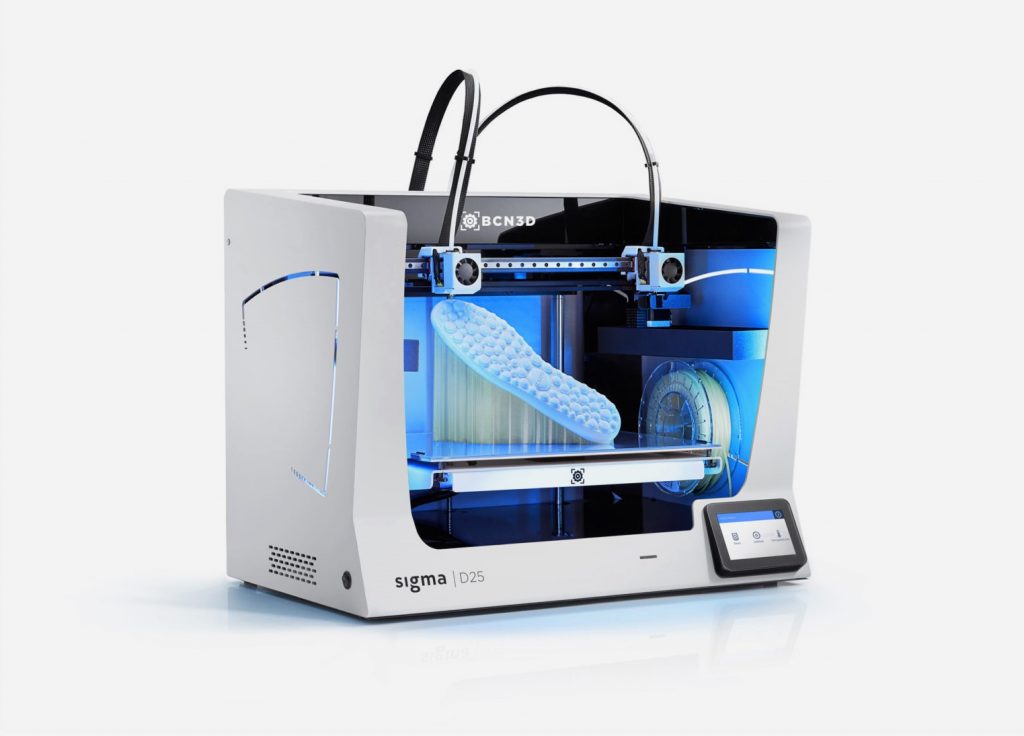
Bigger, bolder, better
BCN3D has given its latest entry into the Sigma series a makeover. Rather than the dark grey frames of the original R19 systems, the D25 features a whole new silver aluminum frame complete with a glossy black logo banner, and we have to say we love it. With a sizable build volume measuring 420 x 300 x 200mm, the company has also decided to let go of the smaller Sigma sizes, instead opting for a more competitive build chamber more closely aligned with the larger Sigmax.
The aluminum build plate has also been reimagined, substituting out the conventional PCB heater for a new silicone thermal pad for improved heat distribution. This was an issue we picked up on in our original review of the Sigmax R19, so it’s nice to see the company making use of valuable user feedback. With a maximum bed temperature of 80ºC, the 3D printer now limits heat variations to around ±2ºC (down from ±20ºC).
Both the X and Z axes have also been reinforced for greater stability. BCN3D has switched out the aluminum X axis rails for stronger stainless steel counterparts, while the Z axis has been made to be more robust via a redesigned set of Z shaft supports.
When it comes to connectivity, users can choose between Wi-Fi, ethernet, or SD (a 32gb SD card is included). The D25 now features new and improved Android software, making the menus on the 5” full-color touchscreen all the more fluid and aesthetically pleasing. The system even has a set of LED strips running along the interior to facilitate night-time operation, or simply make operations more eye-catching.
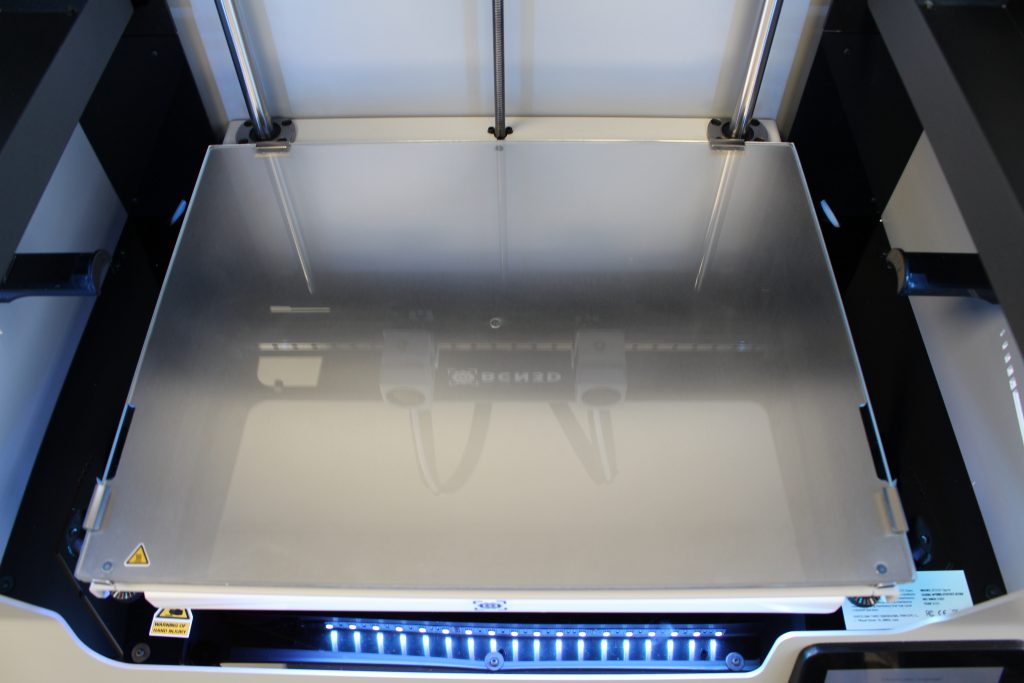
A new take on IDEX 3D printing
As is common with the BCN3D portfolio, the D25 3D printer features an independent dual extrusion setup. With IDEX systems, the two printheads move independently in the X axis, enabling both nozzles to be utilized at the same time for double the throughput. Equipped with high-performance E3D hotends, the system offers a maximum nozzle temperature of 300ºC, making it compatible with a range of filaments such as PETG, TPU, BVOH and PVA.
Interestingly, the company has decided to relocate the extruders to the exterior of the printer’s frame, on the back. Although unusual, the design choice serves to eliminate overheating issues, which can sometimes result in the extruders being unable to grip the heat-softened filament. The placement also makes the extruders easier to maintain. The extruders themselves feature high-tech dual-drive Bondtech gears and a filament runout sensor, which we found to be a lifesaver on multi-day prints.
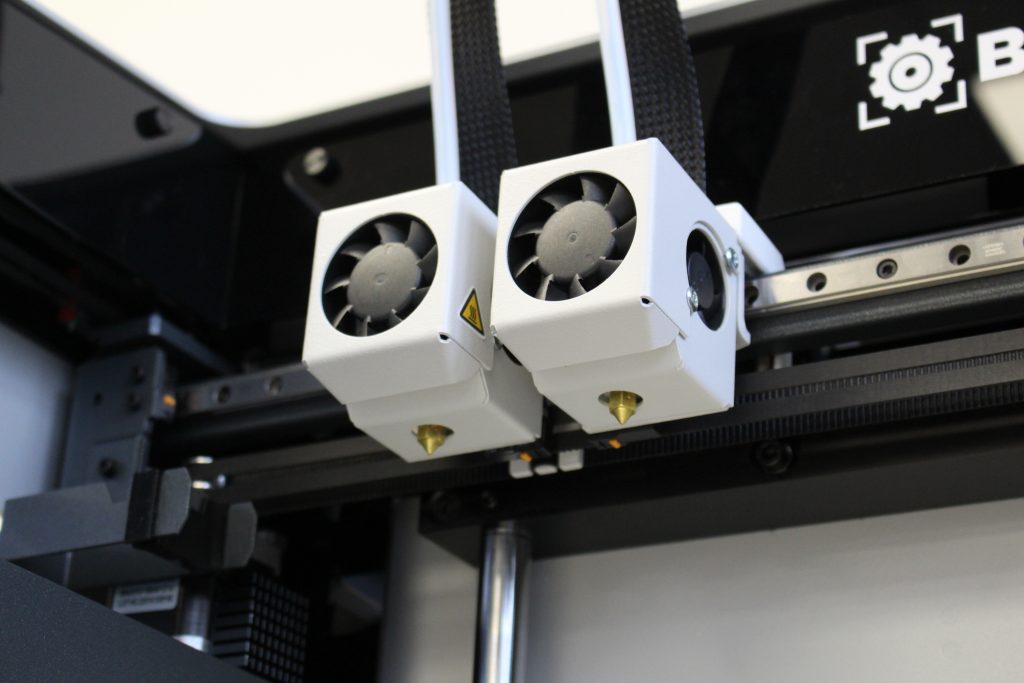
Additionally, the D25 has been fitted with two new filament purge buckets on either side of the bed – both of which are larger than their R19 predecessors. When it comes to spool holders, we have two on the inside and two on the outside, meaning the use of larger third-party spools won’t be a problem at all.
The bed and nozzle calibration processes have also been refined via optimized firmware on the Sigma D25. They are semi-automated, and entirely guided by instructions on the touchscreen. As a user, you’re only required to turn a couple of knobs under the build plate and select the optimal settings from a set of printed test lines presented by the system. The process itself is quite laborious, but the printer remains calibrated for a very long time if done right. For example, our D25 clocked up around 200 hours of print time before requiring a recalibration.

BCN3D Cura slicer
Much like BCN3D’s other systems, the Sigma D25 uses a reskinned version of the open-source Cura slicer. The software operates very similarly to most FFF slicers on the market with basic translation, rotation, and rescaling functionality, and is easy to pick up after a few minutes of fiddling around in the menus. BCN3D Cura also features four dual-extrusion modes that enable users to leverage the system’s IDEX setup: Duplication, Mirror, Multi-material, and Soluble supports.
While we did find a few glitches and occasional laggy menus, the software as a whole works as intended and gets the job done. It’s also worth noting that the BCN3D team is currently working on developing an updated version of the slicer, which should hopefully solve the minor issues we encountered.
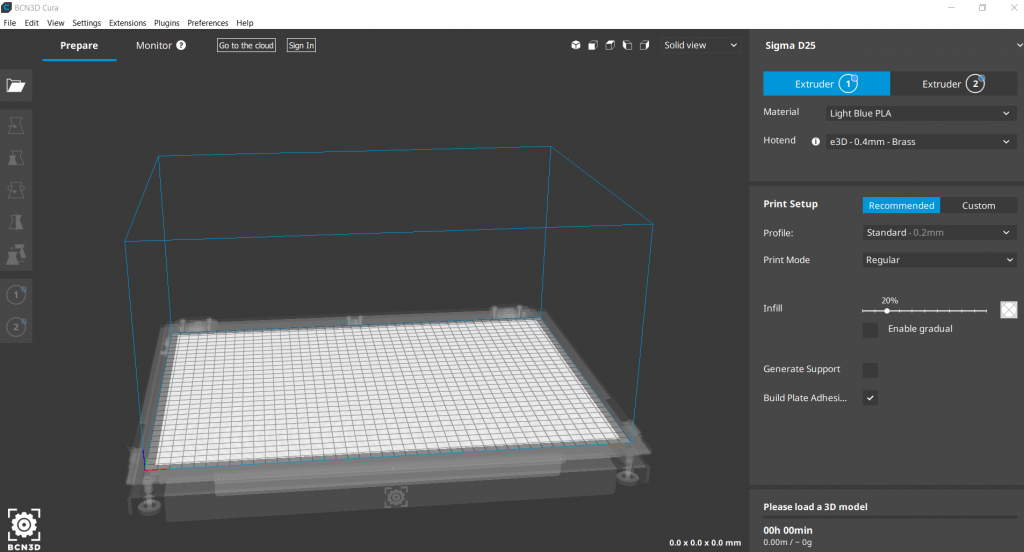
Benchmarking the Sigma D25: 78/100
So how did the Sigma D25 3D printer fare in our benchmarking tests? We start off with 3D Printing Industry’s own benchmarking model, which consolidates many of our smaller print tests into one comprehensive part. We usually print this test in PLA to compare results between printers, but we also often try a PETG or ABS variant to see how the machine handles the more difficult filaments.
Printed in high-temperature PETG, this benchmarking model really put the D25 through its paces, but the system performed well in most of the key test areas. We assign each of the individual sections a weighted score based on factors such as dimensional precision, surface quality, and structural integrity. The D25 earned an overall 3D Printing Industry score of 78/100 – a good professional-grade 3D printer is a 60+.

The overhang test printed successfully up to 50° without any problems, which is a respectable result for a material like PETG. When printed in PLA, we managed to get this number up to 60°, which is excellent. Similarly, the retraction test also printed successfully, albeit with some significant stringing. We weren’t satisfied with the spikes on our first try so we isolated the retraction test and tried it again in PLA with much better results.
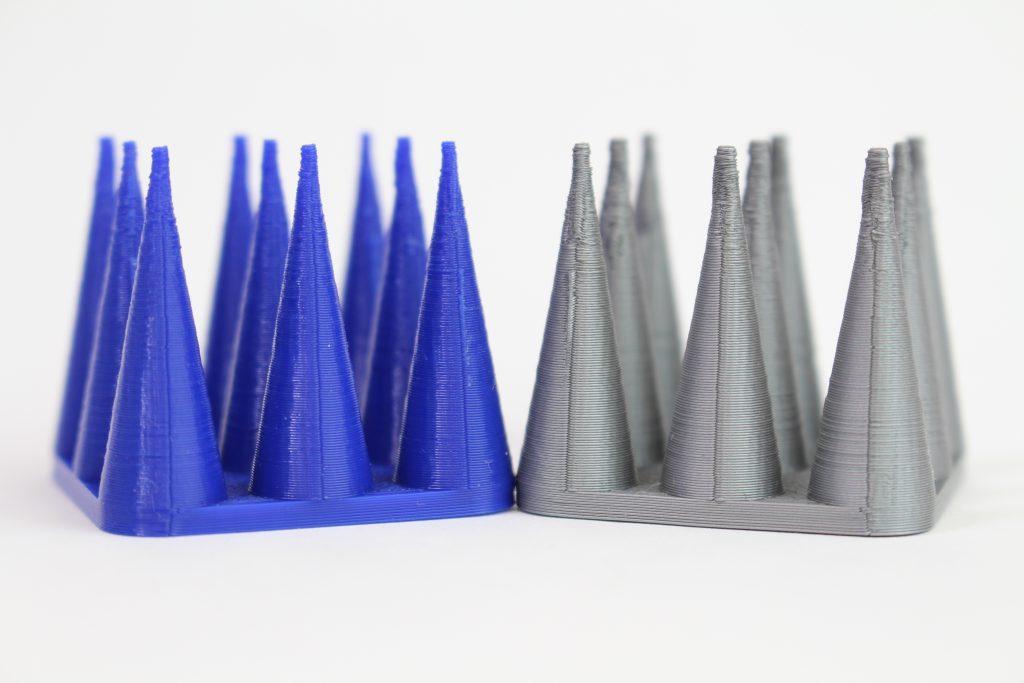
The bridging test is really where the D25 stumbled, with the horizontal structures beginning to curve after the 20mm mark with PETG and 30mm with PLA. We chalked this up to a design fault with the printhead’s cooling system, which can sometimes be ineffective depending on the part’s orientation on the build plate. If the fan duct were to blow air a full 360° around the nozzle, temperature-sensitive structures like horizontal bridges would have no trouble at all, regardless of orientation.

We also wanted to see how the Sigma D25 would handle circular structures, so we 3D printed a circular trajectory test. By studying the normal distribution of the concentric circles’ diameters, we can say that the printer offers sufficient repeatability when the mean of difference is under 0.1mm and the standard deviation is under 0.05mm. Our measurement devices are accurate to ±0.015mm.
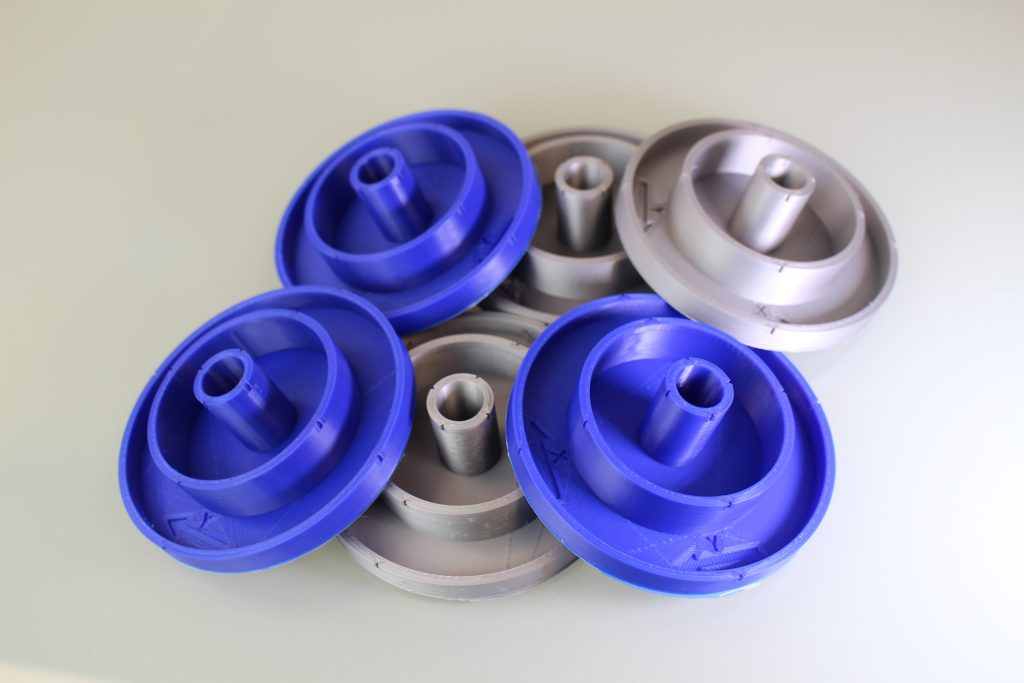
The results were excellent with an average offset of just 0.0592mm for the X-axis and 0.0318mm for the Y-axis, resulting in an average of 0.0455mm for all axes. The average standard deviation also came in at 0.039mm, which is a great result. For context, industrial FFF 3D printers often tout dimensional accuracies of up to 0.1mm, which qualifies them for high-precision prototyping in industries such as automotive or manufacturing tooling.
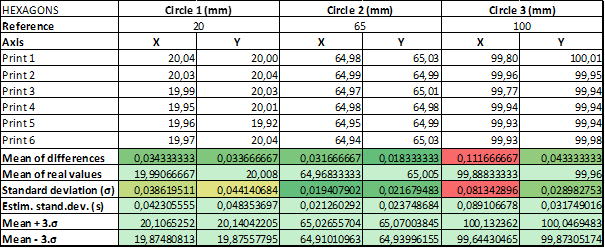
Below you’ll find the bell curves for the best and worst circles in the test – Circle two for the Y-axis and Circle three for the X-axis. In the best case, 99.6% of the 65mm circles manufactured by this 3D printer will be between 64.94mm and 65.07mm. In the worst case, 99.6% of the 100mm circles fabricated by this 3D printer will be between 99.64mm and 100.13mm.
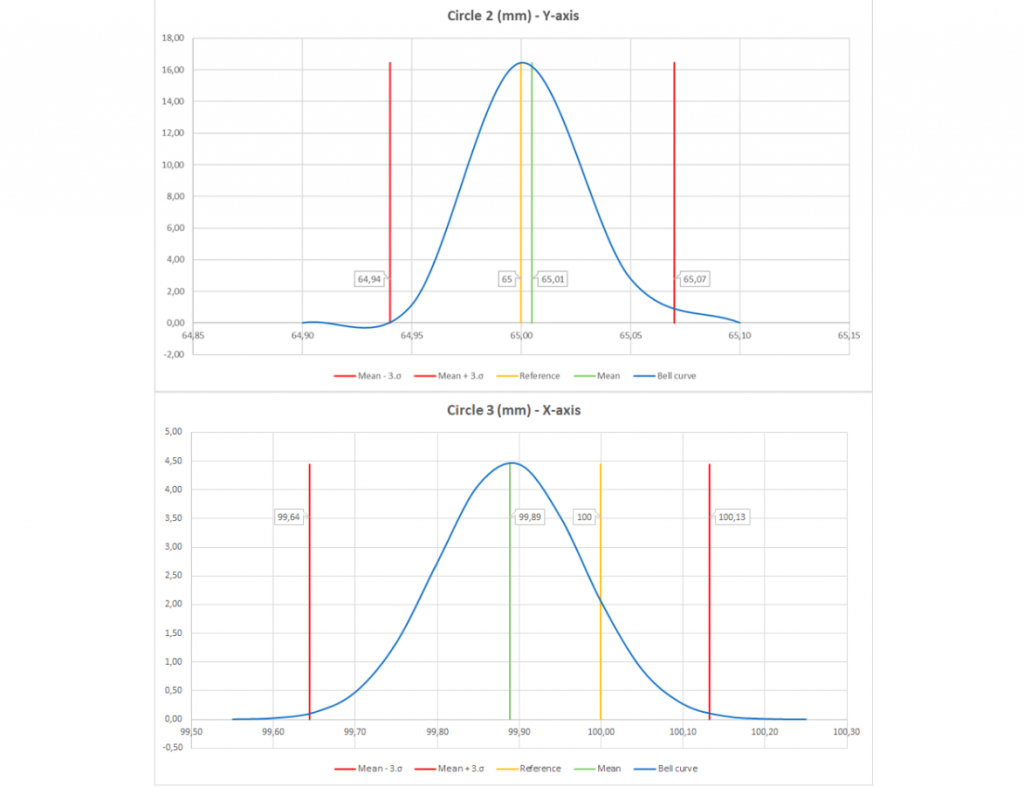
Real application tests
As always, we also 3D printed a set of ‘real application’ tests to see how the Sigma D25 might handle itself out in the real world. The first of these was a miniature Notre-Dame cathedral. The print came out beautifully, to say the least, with no defects and minimal stringing between the spikes. Many of the cathedral’s fine architectural details were preserved and the structure’s overhangs were all fabricated successfully.

Then, we opted for a planetary gear system for our mechanical assembly test. Dynamic prints like this one give us an indication as to just how tight the tolerances of the 3D printer are, as the ease of assembly and overall fluidity of the system can be judged very easily. The D25 did an excellent job with this print, as each of our gears had clean surfaces and meshed well with the rest of the assembly, resulting in a fully functional gear system.
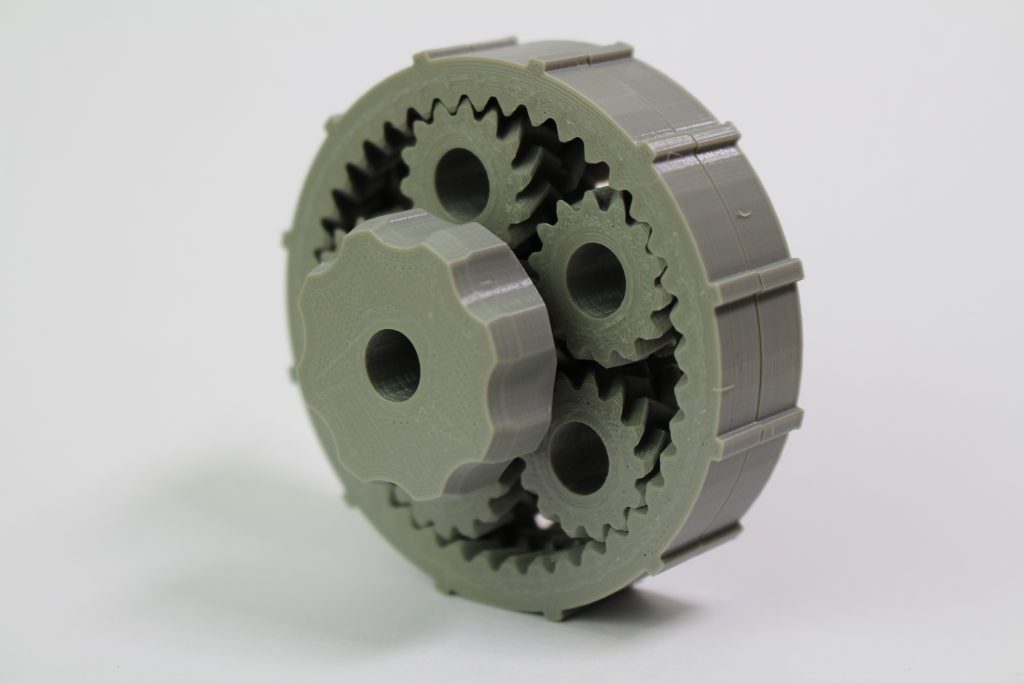
Naturally, we also had to print a multi-material part, which gave us a chance to test how well the nozzles were calibrated with respect to each other. Our double PLA fidget toy featured some of the cleanest material interface zones we’ve ever seen in a multi-material print, with no color bleeding at all. The Sigma D25 held its own admirably here, showcasing high-quality multi-material fabrication better than most dual-extrusion 3D printers on the market. A big win.
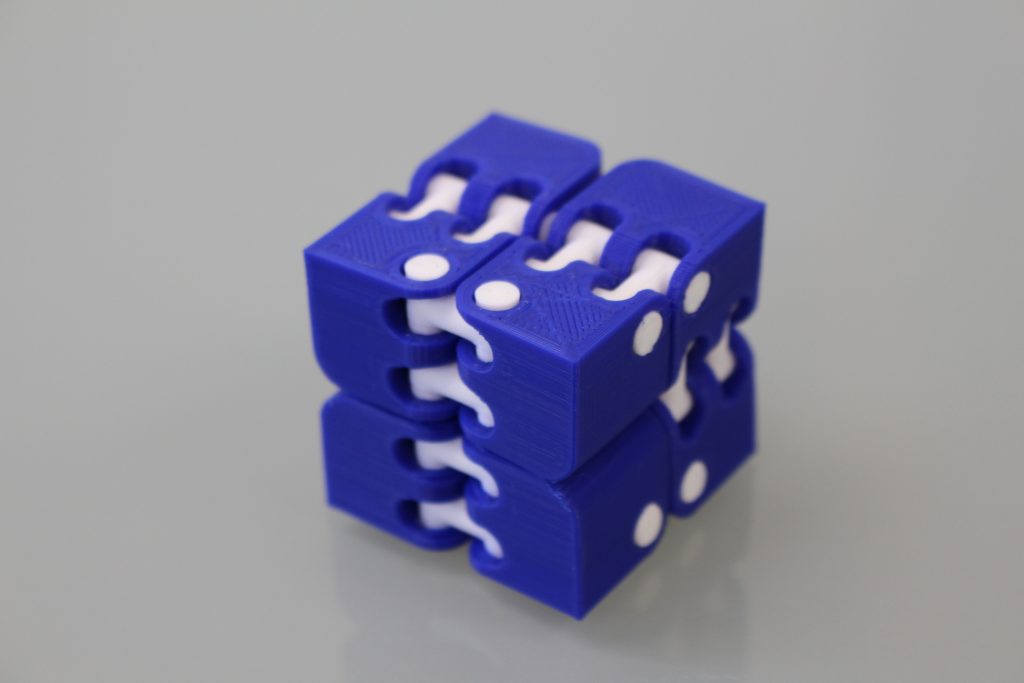
Finally, we also tried our hand at a PVA soluble support print. PVA, or polyvinyl alcohol, is a flexible and biodegradable polymer that is very sensitive to moisture. When submerged in water, PVA dissolves, making it a great support material when it comes to partially closed cavities and overhangs. We printed our main part – a topologically-optimized steering column – in PETG. Suffice it to say, the build was a complete success with minimal support scarring and a fully functional prototype.

The verdict
BCN3D has gone above and beyond with the Sigma D25 3D printer. The original R19 systems did their jobs and they did them well, but the multitude of upgrades offered by the D25 is enough to breathe new life into the company’s portfolio. With features like a revamped heating system, Wi-Fi connectivity, and a removable bed, this 3D printer has been developed with the love and care you’d give your own child.
Granted, it’s not perfect, with a rigorous and comparatively lengthy calibration process and a slicer that’s nothing to write home about. If you can look past these minor gripes, you’ll get a sleek new design, a reliable IDEX setup, and a healthy build volume to boot – all in a sub-$5000 package that’s well worth a pickup.
Technical specifications
| Build volume | 420 x 300 x 200mm |
| Extruders | 2 (IDEX) |
| Filament diameter | 2.85mm |
| Layer height | 0.05 – 0.5mm |
| Positioning resolution | 1.25/1.25/1 microns |
| Max bed temperature | 80°C |
| Max nozzle temperature | 300°C |
| Touchscreen | 5″ full-color |
| Connectivity | SD, Wi-Fi, ethernet |
| Dimensions | 690 x 530 x 550mm |
| Weight | 30kg |
Buy the BCN3D Sigma D25 3D printer here. The system is available to order now for €3,495 ($4,200).
Subscribe to the 3D Printing Industry newsletter for the latest news in additive manufacturing. You can also stay connected by following us on Twitter and liking us on Facebook.
Looking for a career in additive manufacturing? Visit 3D Printing Jobs for a selection of roles in the industry.
Featured image shows the BCN3D Sigma D25 3D printer. Photo via BCN3D.



